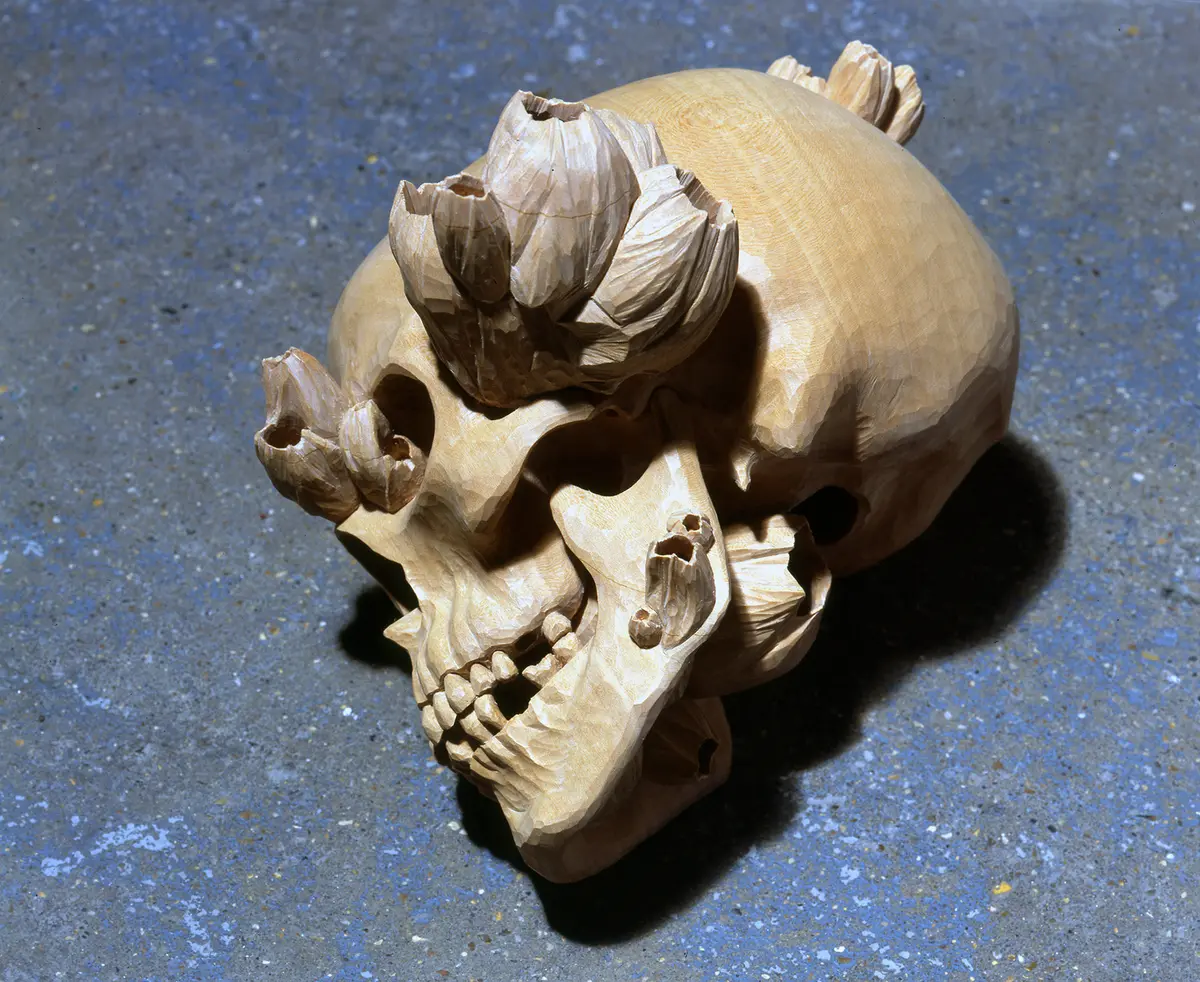We use cookies and other technologies to personalize your experience and collect analytics.
Long Time Gone
Ricky Swallow
Ricky Swallow
Long Time Gone
17 November – 21 December 2006
Press release

Stuart Shave Modern Art is pleased to present Australian artist Ricky Swallow in his first solo show at the gallery since representing Australia at the Venice Biennale in 2005.
Creating monuments to personal biographical remembrances, Swallow carves objects that provoke formative and collective memories.
Each of the five works included in Long Time Gone are meticulously carved and rendered in intricate detail from single pieces of varying types of wood, including English limewood, pear wood and the hardwood julatong. Over the past year the surface of Swallow’s works have developed with a ‘less apologetic attitude to the gestures of carving’1. Becoming less sanded and more analogous to the textures of the original form the sculptures have now begun to allow a generous access to the physical process of their creation.
Swallow’s works draw heavily on the potency of allegory; each discarded object or recently departed scene becomes a vivid act of storytelling. In this sense Swallow’s work maintains close parallels with the meandering narratives of the folk musician; each creating imagery and scenarios which the mind the remakes in it’s own personal retelling. Long Time Gone is the product of Swallow’s own private ‘Woodshedding’; a term used by jazz musicians to describe a period of isolation where a single style or technique is worked on and mastered.
Unbroken Ways for Derek Bailey speaks in homage to the re-interpreted craft innovation spurred by improvised guitarist Derek Bailey. The work also stands as a monument to the stubbornness of a recorded archive and the limitless proportions of a career assisted by one simple traditional instrument. The sculpture is fuelled by Swallow’s appreciation for Bailey’s swansong, Carpel Tunnel, in which Bailey narrates the affect of this condition on his playing style as he plucks at his guitar beneath these words. The gesture of the hand and fingers pointing down, lays between a defined and formal reference to classical or traditional sculpture and the act of a person letting go, resigned and weary.
Absent figures often haunt Swallow’s sculptures where vacated and uninhabited spaces suggest life now departed or moved on. The vacated apertures of the barnacles that grow from the surface of a isolated skull in the work Younger Than Yesterday, suggest more overtly the notion of time. As the barnacles bloom from this vessel now departed and long deserted of life, Swallow begins to layer the notion of time and its inevitable passing. The deterioration of the skull’s former life becomes the root from which the barnacle’s macabre decoration, pushes forward and flourishes. The works Harpoon Dodger and Limb begin in this same way to pull a new life from the end of another.
Recollection is made tangible and then suspended in its memorialisation and moments of remembered action become caught in abstracted and incomplete memory. In the work The Bricoleur a shoe sits fixed between the limbs of a tree, it’s laces trailing down the branches like arteries entwining themselves within the formal structure of the tree. The familiar Converse AllStar has come to be representative of a demographic, a certain type of teenager and a certain type of music, not least the artist himself. The circulation between the laces and the outstretched and bone like feel of the branches are anchored by the apparent weight of the shoe as it pulls the sculpture downward. This implication of tension between each element of the sculpture becomes a dialogue in which the shoe begins to carry more life than the contrastingly deadened, skeleton like tree.
Long Time Gone assembles a sculptural inventory of forms for which both a collective narrative and isolated readings are appropriate, allowing the viewer a moment of idyllic suspension.
Since representing Australia in the Venice Biennale in 2005, Swallow has had two major shows at PS1/MoMA, New York and at the Art Gallery of Western Australia, Perth, Australia. In 2007 Swallow will also have solo exhibitions at The Douglas Hyde Gallery, Dublin, Ireland and also at the Kunsthalle Vienna, Austria.